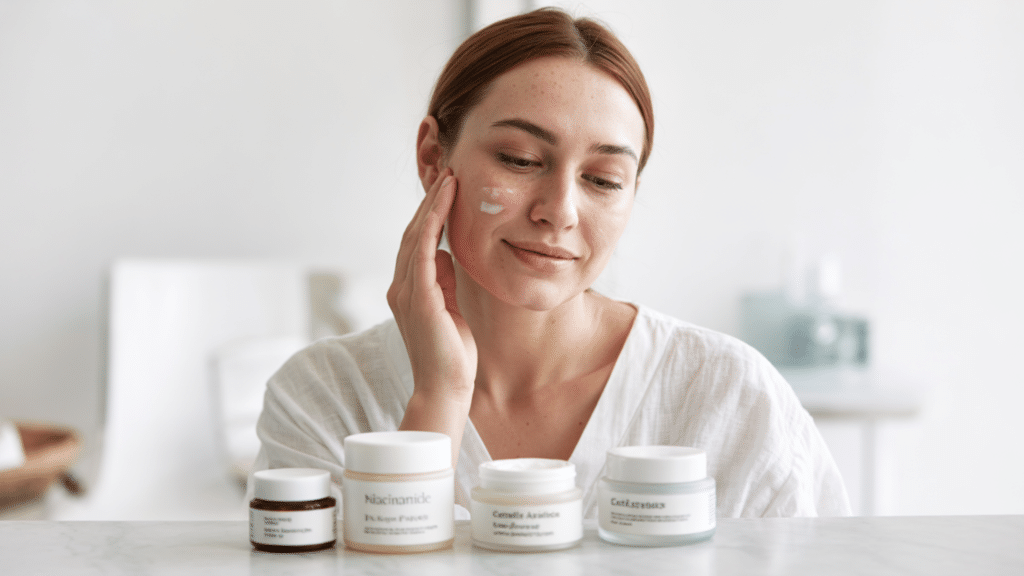Red, irritated skin staring back at you in the mirror? You’re definitely not alone in this struggle.
Facial redness affects millions of people worldwide and can feel incredibly frustrating to deal with.
Your skin might flush from cold weather, react to certain products, or show persistent red patches, and finding the right solution often feels like solving a puzzle.
The good news is that with the right approach and products, you can calm angry skin and restore a more balanced complexion.
This guide will walk you through proven methods to reduce facial redness, from understanding what’s causing it to choosing the most effective skincare products.
Let’s examine gentle, science-backed solutions that can help you achieve calmer, happier skin.
What’s Really Causing Your Red Face?
Understanding why your skin turns red is the first step toward fixing it. Different causes need different approaches, so identifying your specific trigger makes all the difference.
1. Sensitive Skin
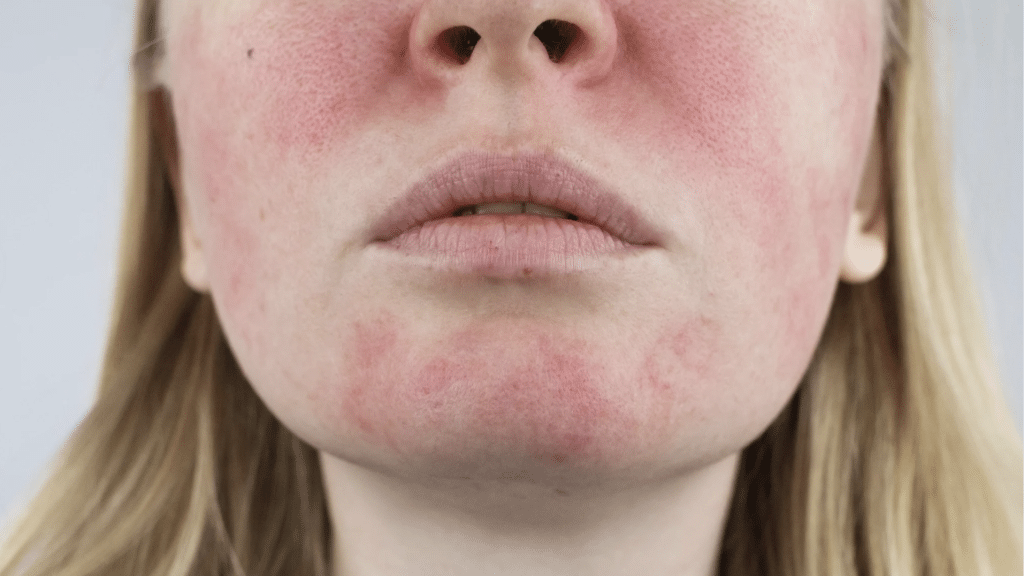
If your face gets red after trying new products or being exposed to certain ingredients, you likely have reactive skin that needs extra gentle care.
This type of redness usually appears quickly after contact with irritants and typically fades within a few hours. Common triggers include fragrances, essential oils, or harsh cleansing ingredients.
Treatment Approach:
- Switch to fragrance-free products and always patch test new items
- Use mild cleansers and lukewarm water only
- Apply soothing moisturizers with ceramides or hyaluronic acid
- Avoid over-washing your face
2. Rosacea
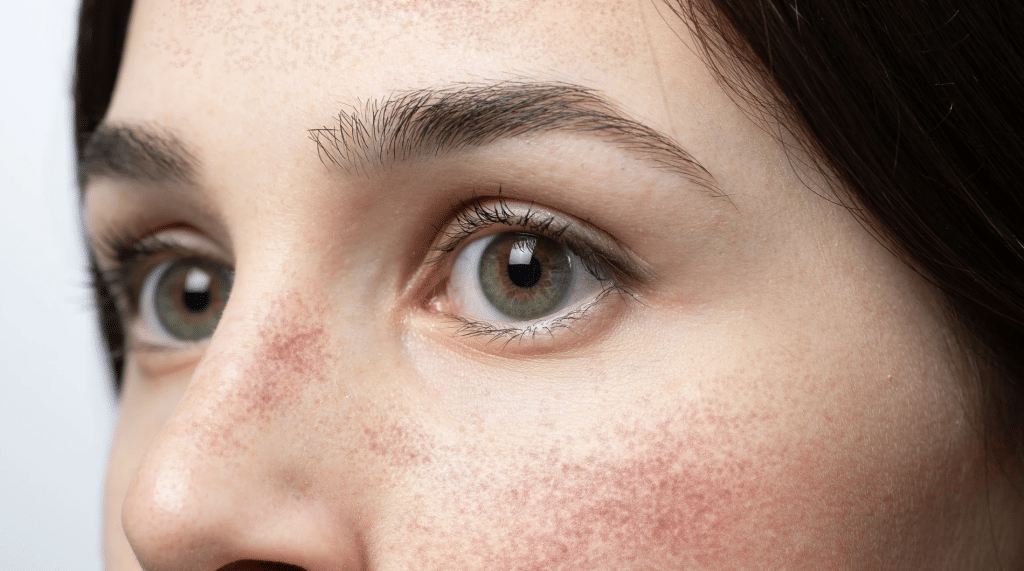
This shows up as persistent redness, usually across the cheeks, nose, chin, and forehead. This condition often comes with visible blood vessels and can worsen with triggers like spicy food, alcohol, or stress.
Unlike temporary irritation, rosacea is a chronic condition that requires ongoing management. The redness tends to be symmetrical and may feel warm or burning to the touch.
Treatment Approach:
- Use niacinamide, azelaic acid, or green tea extract products
- Apply mineral sunscreen daily for protection
- Avoid known triggers like spicy food and alcohol
- Consider prescription treatments from a dermatologist
3. Post-Acne Inflammation
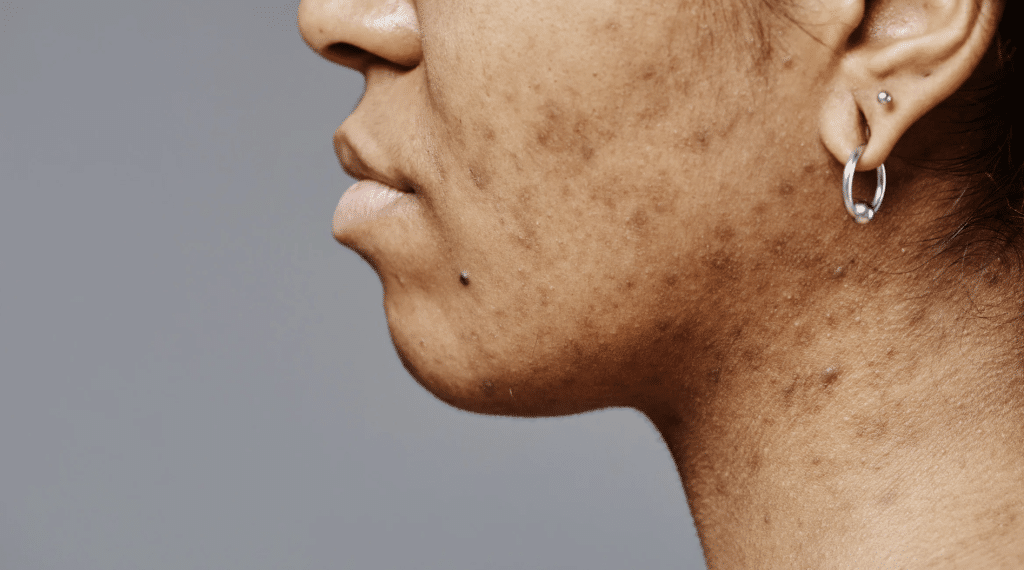
These leave red marks where pimples used to be. These spots can stick around for weeks or months after the breakout clears up.
Also called post-inflammatory erythema, these marks are your skin’s natural healing response. They’re flat, unlike raised acne scars, and will eventually fade with proper care and sun protection.
Treatment Approach:
- Use niacinamide, vitamin C, or azelaic acid to speed healing
- Apply sunscreen religiously to prevent darkening
- Be patient – marks fade naturally over 3-6 months
- Avoid picking at active breakouts
4. Environmental Factors

Harsh wind, extreme cold, or too much sun exposure can also cause temporary or ongoing redness. Even indoor heating can dry out your skin and make it look irritated.
This type of redness often comes with tightness, stinging, or a windburned appearance. It’s your skin’s way of reacting to external stressors that compromise its protective barrier.
Treatment Approach:
- Use a humidifier indoors during dry months
- Apply rich moisturizer before going outside
- Protect yourself with sunscreen and scarves in harsh weather
- Repair skin barrier with ceramides or colloidal oatmeal products
Power Ingredients That Calm Angry Skin
Certain ingredients have proven track records for reducing redness and irritation. Knowing what to look for makes shopping for skincare much easier.
- Niacinamide strengthens your skin barrier while reducing inflammation and controlling oil production.
- Centella Asiatica (Cica) is a gentle plant extract that’s been used for centuries to heal and calm irritated skin.
- Azelaic Acid works especially well for rosacea and post-acne redness while being gentler than other acids.
- Green Tea Extract provides antioxidant protection and soothes environmentally triggered redness.
- Colloidal Oatmeal creates a protective barrier while delivering anti-inflammatory benefits for sensitive skin.
- Allantoin and Panthenol gently soothe and repair damaged skin without causing further irritation.
Now that you know what ingredients to look for, let’s examine specific products that can help calm your red skin.
The Best Products to Soothe Red, Irritated Skin
Finding the right products can change your skin’s appearance and comfort level. Here are tried-and-true options that consistently deliver results.
| PRODUCT | BENEFITS | |
|---|---|---|
| Cleansers | La Roche-Posay Toleriane Hydrating Gentle Cleanser | Removes makeup without stripping |
| Vanicream Gentle Facial Cleanser | Fragrance-free and mild | |
| Toners & Mists | Paula’s Choice Enriched Calming Toner | Soothes irritation |
| Avene Thermal Spring Water Mist | Instant relief | |
| Moisturizers | First Aid Beauty Ultra Repair Cream | Calms redness |
| Dr. Jart+ Cicapair Tiger Grass Cream | Reduces inflammation | |
| CeraVe Moisturizing Cream | Strengthens skin barrier | |
| Sunscreens | EltaMD UV Clear SPF 46 | For sensitive skin |
| La Roche-Posay Anthelios Mineral Tinted SPF 50 | Neutralizes redness | |
| Serums | The Ordinary Azelaic Acid Suspension 10% | Treats rosacea |
| iUNIK Centella Calming Gel Cream | High Centella concentration | |
| Paula’s Choice 10% Niacinamide Booster | Target the red areas |
These product recommendations give you a solid starting point, but application technique is just as important as the products themselves.
How to Apply Products for Best Results
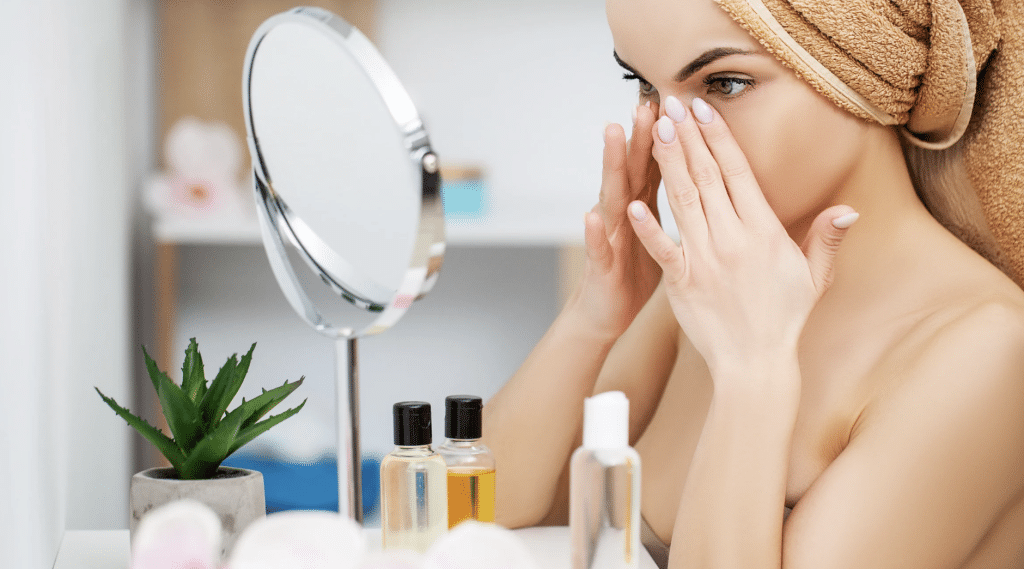
Using great products the wrong way can actually make redness worse. Here’s how to get the best results from your skincare routine.
- Start with Patch Testing: Always patch test new products on a small area before applying them to your entire face. Wait 24-48 hours to see if any irritation develops.
- Choose the Right Formulas: Choose fragrance-free formulas whenever possible. Even “natural” fragrances can trigger redness in sensitive skin.
- Layer Products Correctly: Apply products in thin layers rather than thick globs. This helps your skin absorb everything properly without feeling overwhelmed.
- Follow Proper Order: Follow the basic routine order: cleanse, tone, apply treatments, moisturize, then finish with sunscreen during the day. This layering system ensures each product can work effectively.
- Practice Patience: Be patient with new products. It often takes 4-6 weeks to see significant improvement in redness, so don’t give up too quickly.
Pro Tip :Wait 2-3 minutes between products, use lukewarm water, pat gently instead of rubbing, start with lower concentrations, and keep a skincare diary.
Beyond your skincare routine, simple daily habits can significantly reduce facial redness and help maintain calmer, healthier-looking skin.
Daily Habits That Support Calmer Skin
Your daily routine affects how red your skin gets. Small changes can lead to noticeable improvements. Avoid hot water when cleansing, as heat strips protective oils and triggers redness.
Limit spicy foods and alcohol if they make your face flush. Pay attention to your personal triggers. Manage stress through exercise or meditation, since stress hormones worsen inflammatory conditions like rosacea.
Use a humidifier in dry climates to help maintain your skin’s moisture barrier. Stick to your skincare routine consistently, as switching products frequently irritates sensitive skin.
Sometimes, despite your efforts, you might need professional help.
When It’s Time to See a Dermatologist

Knowing when to seek professional help can save you time, money, and frustration. Here are signs that indicate you should make an appointment.
- Redness persists despite gentle products for several months
- Visible blood vessels or acne-like bumps that don’t respond to treatments
- Severe reactions with swelling, burning, or widespread redness
- Need for prescription-strength medications or professional treatments
- Laser therapy consideration for stubborn redness or visible vessels
A dermatologist can provide targeted solutions that over-the-counter products simply cannot match, helping you achieve the clear, comfortable skin you’ve been working toward.
Final Thoughts
Facial redness doesn’t have to be a permanent struggle. By understanding your triggers and choosing gentle ingredients, you can achieve calm, comfortable skin.
The best skincare routine is one you can stick to long-term. Start simple, be patient with the process, and give your skin consistent care.
Every skin type is different, so what works for others might need adjustment for you. Listen to your skin and adapt your routine as needed.
Don’t hesitate to seek professional help if your redness persists or worsens. A dermatologist can provide specialized treatments that make all the difference.
Have a favorite redness-reducing product that’s worked wonders for you? Share your experience in the comments below!
Frequently Asked Questions
How Long Does it take to See Results when Treating Facial Redness?
Most people see improvement within 4-6 weeks of consistent product use. Severe redness or rosacea may take 2-3 months to show significant changes.
Can I Use Multiple Redness-Reducing Products at The Same Time?
Yes, but introduce one new product at a time. Wait 1-2 weeks before adding another to avoid overwhelming sensitive skin.
Is Facial Redness the Same as Rosacea?
Not always. Rosacea is a chronic condition with persistent redness, while temporary redness can be caused by irritation, allergies, or environmental factors.
Should I Avoid All Acids if I Have Red, Sensitive Skin?
Not necessarily. Gentle acids like azelaic acid can actually help reduce redness. Start with low concentrations and use them only 2-3 times per week.
Can Diet Really Affect Facial Redness?
Yes. Common triggers include spicy foods, alcohol, hot beverages, and foods high in histamines like aged cheeses and wine.

